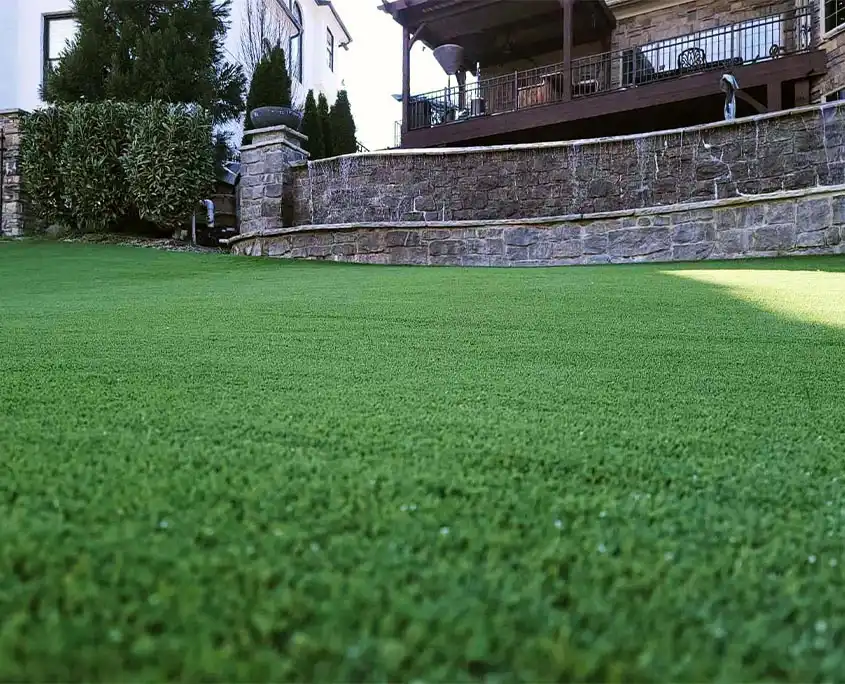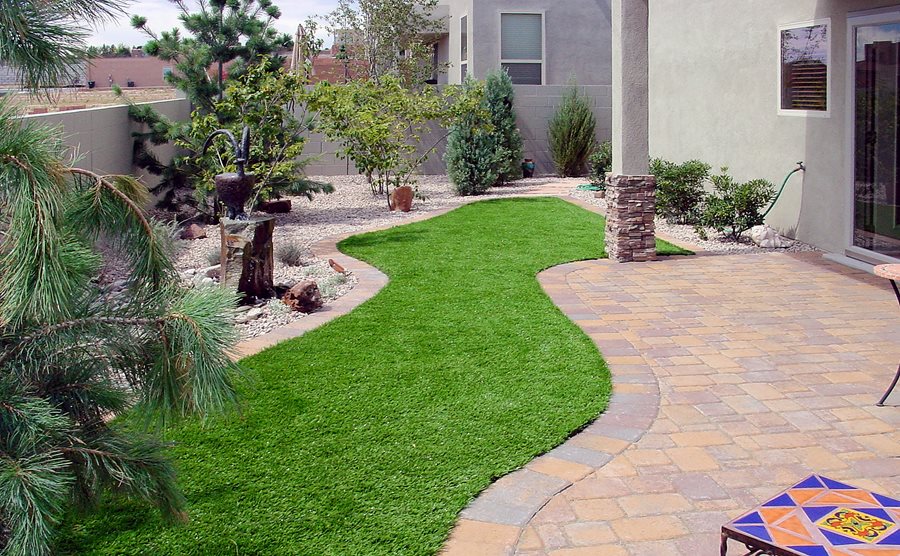Find Reliable Artificial Turf Companies Phoenix for Your Outdoor Needs
Find Reliable Artificial Turf Companies Phoenix for Your Outdoor Needs
Blog Article
Look Into the Environmental Conveniences of Opting for Synthetic Grass Solutions
The fostering of artificial grass remedies offers a compelling chance to attend to pushing environmental challenges. By substantially reducing water usage and lessening the application of damaging chemicals, these options not only advertise sustainable landscape design but additionally protect neighborhood environments.
Water Preservation Conveniences
One of the most significant benefits of fabricated grass is its ability to conserve water. In comparison, synthetic turf does not require watering, substantially decreasing the overall need for water resources.
By eliminating the requirement for normal watering, synthetic grass adds to sustainable landscape practices and assists minimize the environmental influence of excessive water usage. The conservation of water extends to the reduction of overflow, which can lead to dirt disintegration and river air pollution.
Additionally, the installation of man-made grass permits municipalities and home owners to assign water sources a lot more efficiently, focusing on necessary usages such as alcohol consumption water and farming. The change in the direction of synthetic grass not just promotes responsible water usage but also aligns with broader environmental objectives focused on protecting natural resources.
As communities increasingly focus on sustainability, the water preservation benefits of artificial turf offer an engaging situation for its adoption in industrial and domestic landscaping tasks.
Minimized Chemical Usage
The transition to synthetic grass substantially decreases the dependence on chemical therapies generally utilized in natural yard upkeep. Conventional lawn administration usually involves the application of herbicides, plant foods, and pesticides to promote development and control insects. These chemicals can posture dangers to human health, regional wild animals, and the setting, contributing to dirt and water contamination.
On the other hand, synthetic lawn gets rid of the need for these damaging substances. When mounted, it requires very little maintenance, mainly containing regular cleaning and seldom infill replenishment. This reduction in chemical usage not just profits the immediate atmosphere yet also adds to wider eco-friendly security. By decreasing the release of synthetic compounds right into the ecological community, synthetic turf promotes healthier dirt and water supply.
Moreover, the lack of chemical runoff connected with synthetic lawn installations helps safeguard regional waterways from contamination, supporting aquatic life and preserving biodiversity. Arizona turf. As neighborhoods progressively prioritize sustainable methods, going with artificial lawn offers a viable service that lines up with environmental preservation objectives. With this shift, homeowner can delight in rich environment-friendly rooms without compromising eco-friendly health, leading the method for an extra lasting future
Lower Carbon Footprint

Additionally, the installment of fabricated lawn can cause considerable water preservation. All-natural yards require considerable quantities of water for irrigation, which not just includes in the carbon impact connected with water extraction and therapy but additionally stress neighborhood water sources. In contrast, synthetic grass needs very little upkeep, requiring no watering, therefore dramatically minimizing water usage and its connected power expenses.
Additionally, the longevity of synthetic grass adds to its lower carbon effect. With a life-span of approximately 15 years or more, the requirement for regular replacements is diminished, resulting in less waste and lower power consumption in production and dealing with typical lawn choices. In general, fabricated turf provides a sustainable choice for ecologically conscious landscaping.
Habitat Conservation
Habitat conservation is an essential consideration in the debate over landscape design options, especially when comparing synthetic grass to all-natural lawn. Natural yard yards usually require considerable upkeep, consisting of making use of plant foods, herbicides, and chemicals, which can detrimentally impact local environments. These chemicals can seep right into the dirt and waterways, hurting indigenous flora and animals and interfering with regional environments.
In comparison, synthetic grass presents a possibility to minimize the ecological impact of landscape design. By selecting synthetic turf, home owners can reduce the disturbance of natural environments linked with typical grass treatment techniques. Synthetic grass removes the requirement for hazardous chemicals, therefore securing nearby wild animals and maintaining the honesty of bordering ecological communities. The installment of artificial lawn can lead to the conversion of former lawn locations right into even more biodiverse landscapes, such as pollinator yards or indigenous plant locations, which can sustain neighborhood wild animals.
Eventually, the shift to synthetic turf not only preserves water and minimizes maintenance efforts but additionally cultivates a much more harmonious partnership in between human activities and the native environment, advertising habitat preservation at the same time.
Long-Term Sustainability
Lasting sustainability is a vital consider assessing the advantages of synthetic grass over traditional yard lawns. One of one of the most significant advantages of synthetic grass is its durability; it can last as much as 15-20 years with minimal upkeep, whereas natural yard requires constant reseeding and replacement. from this source This longevity minimizes the need for continuous sources, such as water, fertilizers, and chemicals, which are necessary for maintaining a healthy and balanced my review here grass yard.
Additionally, synthetic grass adds to a reduction in carbon discharges related to yard treatment equipment. Standard grass typically call for gas-powered mowers, leaners, and blowers, every one of which contribute to air pollution. Arizona artificial turf. In contrast, synthetic grass eliminates the need for such devices, advertising a cleaner environment
Additionally, the production of synthetic grass significantly utilizes recycled materials, improving its sustainability account. As suppliers take on environment-friendly techniques, the ecological footprint of artificial grass remains to lessen.

Conclusion
The adoption of man-made grass remedies offers substantial ecological benefits, consisting of significant water preservation, minimized dependence on unsafe chemicals, and a reduced carbon impact. Man-made grass aids in preserving all-natural environments by minimizing land disturbance and advertising long-lasting sustainability with the use of resilient materials. Jointly, these aspects highlight the potential of artificial lawn to add positively to ecological health and wellness and provide a viable choice to standard landscaping techniques in a significantly resource-conscious world.
In contrast, man-made turf does not require watering, substantially decreasing the total demand for water resources. By reducing the release of synthetic substances into the environment, fabricated lawn promotes healthier soil my website and water systems.
Additionally, the installment of synthetic lawn can result in considerable water preservation. In contrast, man-made turf needs marginal maintenance, needing no watering, thereby substantially reducing water usage and its linked energy expenses.

Report this page